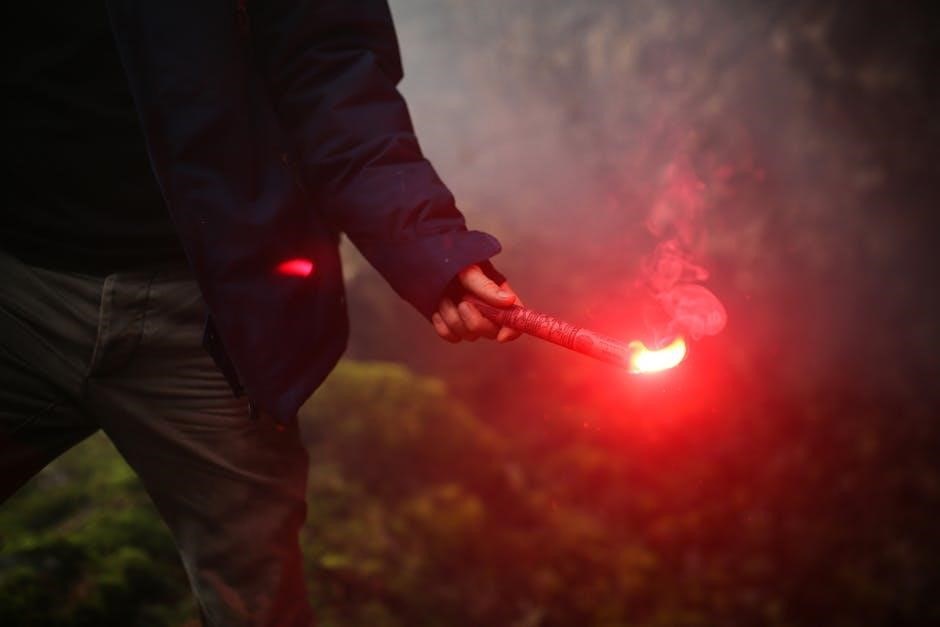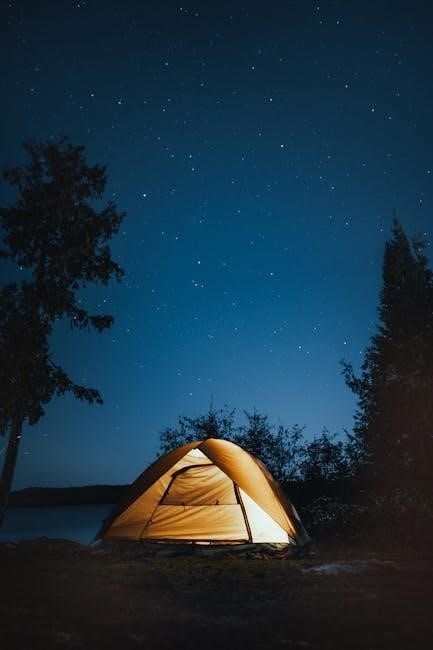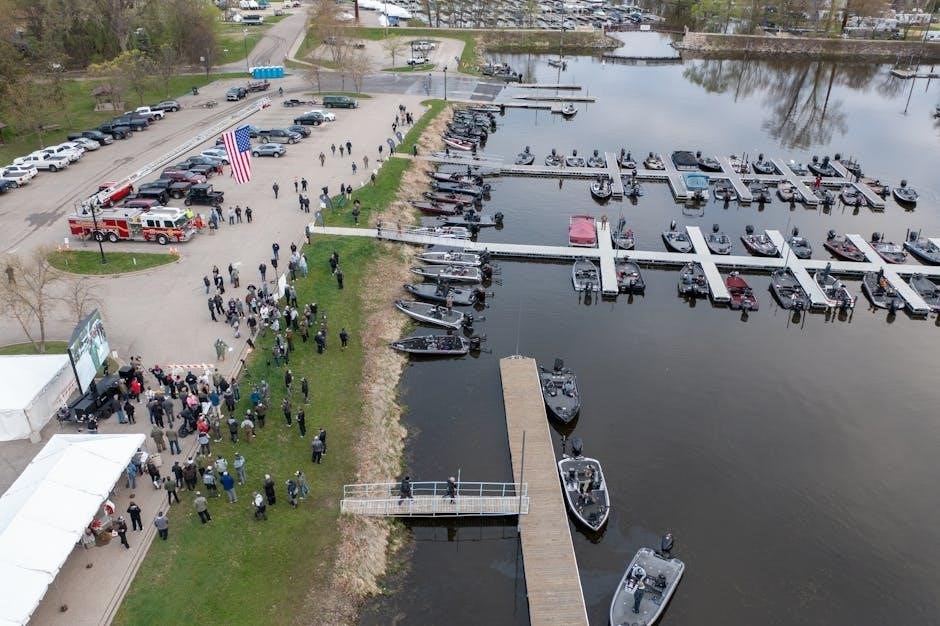midwest survival guide

Charlie Berens’ Midwest Survival Guide humorously explores the region’s culture, language, and quirks, offering insights into “Midwest Nice,” local customs, and the heartland’s unique way of life.
1.1 Understanding the Unique Culture of the Midwest
The Midwest’s culture is deeply rooted in its agricultural heritage, strong community ties, and a distinctive regional identity. Known for “Midwest Nice,” the area emphasizes politeness, hospitality, and a no-nonsense approach to life. Locals take pride in their straightforwardness and down-to-earth values, often prioritizing practicality and hard work. The region’s culture is also shaped by its German, Scandinavian, and Polish influences, visible in local customs, festivals, and cuisine. Understanding these cultural nuances is key to navigating life in the Midwest, where community events, local traditions, and seasonal activities play a central role. From county fairs to Friday night football, the Midwest’s culture is a blend of tradition and resilience, offering a unique perspective on American life. By embracing these cultural elements, one can better appreciate the heartland’s charm and way of life.
- Community-driven events are central to Midwestern life.
- Local customs often reflect the region’s European heritage.
- Seasonal activities, like farming and hunting, shape daily routines.
1.2 Importance of Adaptation in the Midwest
Adapting to life in the Midwest requires embracing its unique cultural norms, seasonal rhythms, and community-driven lifestyle. The region’s strong sense of tradition and local customs means fitting in often involves understanding and respecting these practices. From learning regional slang like “bubbler” for water fountain to navigating the nuances of “Midwest Nice,” adaptation is key to building connections. Seasonal changes also demand flexibility, as extreme weather conditions like harsh winters and tornado-prone springs require specific precautions. Additionally, participating in community events, such as county fairs or potluck dinners, is a cornerstone of Midwestern life. By adapting to these cultural and environmental factors, newcomers can seamlessly integrate into the heartland’s way of life.
- Understand regional slang and expressions to communicate effectively.
- Prepare for extreme weather conditions year-round.
- Engage in community activities to build strong social bonds.

Essential Midwest Cultural Nuances
The Midwest’s cultural identity revolves around humility, community, and simplicity. Festivals, sports, and local traditions are deeply ingrained, while indirect communication and polite demeanor are highly valued social norms.
2.1 The Concept of “Midwest Nice”
“Midwest Nice” is a cultural phenomenon where residents are known for their exceptional politeness, patience, and willingness to help. It’s a blend of humility and genuine kindness, often characterized by indirect communication. This trait emphasizes harmony over confrontation, making interactions feel warm and welcoming. For instance, saying “sorry” frequently or avoiding direct disagreement are common expressions of this behavior. Charlie Berens highlights this in his guide, noting how it shapes daily interactions, from casual conversations to community gatherings. “Midwest Nice” isn’t just a stereotype; it’s a deeply rooted value that fosters strong social bonds and a sense of belonging. Understanding this concept is key to navigating the Midwest’s social landscape effectively.
2.2 Local Customs and Traditions
The Midwest is rich in unique customs and traditions that reflect its strong sense of community and cultural heritage. For instance, county fairs are a staple, featuring tractor pulls, pie-eating contests, and local produce. Another cherished tradition is the Friday night fish fry, often hosted at local bars or churches, serving fried fish, cheese curds, and rye bread. These gatherings are not just about food but about fostering connections and camaraderie. Additionally, the Midwest is known for its “supper clubs,” where families and friends gather for casual dining and socializing. These customs highlight the region’s emphasis on hospitality and togetherness, creating a sense of belonging for both locals and visitors alike. Understanding these traditions is essential to fully experiencing the Midwest’s vibrant cultural landscape.
2.3 The Role of Community in Midwestern Life
Community plays a vital role in Midwestern life, fostering a strong sense of belonging and mutual support. Neighbors often gather for potluck dinners, where everyone brings a dish to share, emphasizing collaboration and camaraderie. Similarly, events like barn raisings and local fundraisers highlight the region’s collective spirit. The Midwest’s tight-knit communities are built on trust and reliability, with residents frequently helping one another during hardships. This communal mindset is deeply rooted in the region’s agricultural heritage, where teamwork was essential for survival. Today, it manifests in everything from small-town festivals to volunteer efforts. The emphasis on community not only strengthens social bonds but also contributes to the Midwest’s reputation for hospitality and resilience. Understanding this collective spirit is key to navigating and appreciating Midwestern culture effectively.

Language and Slang in the Midwest
Midwestern slang is full of unique phrases like “Youbetcha” and “Oh fer cute,” reflecting the region’s folksy charm. Understanding these expressions is key to blending in and connecting locally.
3.1 Common Phrases and Expressions

The Midwest is rich in unique phrases that reflect its culture and humor. Common expressions like “Youbetcha” (a friendly affirmation) and “Oh fer cute” (expressing extreme cuteness) are staples. Locals often use “Hot dish” to describe a casserole and “Bubbler” for a water fountain. These phrases, while quirky, are deeply rooted in the region’s heritage. Understanding them helps visitors connect with Midwesterners on a deeper level and navigate everyday conversations with ease. Charlie Berens’ Midwest Survival Guide highlights these expressions, making them accessible to outsiders. Mastering these phrases isn’t just about fitting in—it’s about embracing the heartland’s charm and humor.
3.2 Regional Accent and Pronunciation
The Midwest is known for its neutral accent, often described as the “General American” accent, which lacks the distinct pronunciation features of other regions. However, subtle variations exist. For example, in parts of the Upper Midwest, especially Minnesota and Wisconsin, vowel sounds in words like “about” and “house” may shift, giving them a unique flair. Additionally, terms like “pop” (instead of “soda”) and “bubbler” (a water fountain) are regionally specific. Midwesterners also tend to soften their speech, making it sound more polite and approachable. This regional pronunciation is a key part of the Midwest’s charm, as highlighted in Charlie Berens’ Midwest Survival Guide. Understanding these accents and terms helps visitors blend in and appreciate the local culture.
3.3 Humor and Sarcasm in Midwestern Communication

Midwesterners often use humor and sarcasm to navigate daily interactions, blending wit with a laid-back demeanor. Charlie Berens, in his Midwest Survival Guide, highlights how humor is a coping mechanism for topics like harsh winters or local quirks. Sarcasm, while subtle, is frequently employed to express irony or mild frustration, often without offense. For instance, a comment like “Oh, great weather we’re having” during a snowstorm is a classic Midwestern sarcastic remark. This dry wit is a hallmark of the region’s communication style, fostering camaraderie and shared experiences. Understanding and appreciating this humor is essential to connecting with locals and fully embracing Midwestern culture.
Midwestern Food and Drink
Midwestern cuisine features hearty dishes like deep-dish pizza, tater tot hotdish, and fried cheese curds. Local beverages include craft beer and sweet tea, while ranch dressing is a cultural staple.
4.1 Iconic Dishes and Recipes
Midwestern cuisine is known for its comforting, hearty dishes deeply rooted in agricultural abundance. Iconic dishes include deep-dish pizza, famous in Chicago, with its thick crust and inverted layers of cheese and sauce. Tater Tot Hotdish, a Minnesota staple, combines tater tots, ground beef, and canned condensed soup for a warm, satisfying casserole. Fried Cheese Curds, often enjoyed at Wisconsin fairs, are crispy, golden bites of melted cheese. These recipes reflect the region’s practical, no-frills cooking style, emphasizing local ingredients and simplicity. They also highlight a sense of community, as many dishes are traditionally served at family gatherings and local events. These iconic meals are not just food but a representation of Midwestern hospitality and cultural pride, showcasing the region’s unique culinary identity.
4.2 Local Beverages and Craft Beer
The Midwest boasts a rich tradition of local beverages and craft beer, deeply intertwined with its culture. Wisconsin, famously known for its brewing heritage, is home to iconic brands like Leinenkugel’s and Miller Brewing Company. Michigan’s craft beer scene thrives with breweries like Founders Brewing Co., known for its bold flavors. Local favorites such as Old Style and Old Milwaukee beers evoke nostalgia and regional pride. Beyond beer, the Midwest is also famous for its Old Fashioned, a classic cocktail often made with bourbon or brandy, and root beer, a sweet, creamy soda frequently enjoyed at family gatherings. These beverages are not just drinks but symbols of Midwestern identity, often shared at community events, festivals, and casual get-togethers, reflecting the region’s warm hospitality and love for tradition.
4.3 The Significance of Ranch Dressing
Ranch dressing holds a revered place in Midwestern cuisine, transcending its role as a simple condiment to become a cultural icon. Invented in the 1950s by Steve Henson, it quickly gained popularity across the Midwest, where creamy, tangy flavors resonate deeply with local tastes. Midwesterners embrace ranch as more than a salad topping—it’s a dip for wings, a sauce for pizza, and even a key ingredient in comfort food recipes. The region’s love for ranch reflects its practical, no-frills approach to food, prioritizing comfort and familiarity. It’s not uncommon to find ranch-drenched dishes at family gatherings, potlucks, or casual meals, symbolizing the Midwest’s hearty, down-to-earth lifestyle. Charlie Berens highlights this obsession in The Midwest Survival Guide, showcasing how ranch dressing embodies the region’s unique culinary identity and communal spirit.

Surviving Midwestern Seasons
Surviving Midwestern seasons requires preparation for harsh winters, vibrant summers, and tornado readiness. The guide offers tips to navigate extreme weather and seasonal activities effectively and stay resilient through each annual cycle.
5.1 Winter Survival Tips
Surviving Midwestern winters demands preparation and resilience. Layering clothing, investing in high-quality snow gear, and keeping ice scrapers handy are essential. Stock up on warm blankets, flashlights, and non-perishable foods. Ensure your vehicle is winter-ready with snow tires and an emergency kit containing jumper cables, a first-aid kit, and a portable charger. Stay informed about weather forecasts and avoid unnecessary travel during blizzards. Keep your home insulated and pipes from freezing by maintaining a steady temperature. Community support is vital—check on neighbors, especially the elderly, and offer help with shoveling or errands. Stay hydrated and prioritize self-care to combat the mental and physical challenges of cold months. Embrace the season’s beauty by engaging in winter activities like ice fishing or sledding, but always prioritize safety and warmth.
5.2 Navigating Summer Festivals and Activities
Midwestern summers are vibrant, with countless festivals celebrating local culture, food, and traditions. From corn on the cob to BBQ ribs, these events showcase the region’s culinary pride. Arrive early to explore vendors and avoid crowds, and don’t forget sunscreen and a reusable water bottle. Many festivals feature live music, ranging from polka to rock, encouraging community bonding. Be prepared for variable weather—pack a light jacket for cooler evenings and a hat for sunny days. Local fairs often include activities like tractor pulls, pie-eating contests, and craft workshops. Engage with locals to fully experience the Midwestern hospitality and humor. Summer is also ideal for outdoor adventures like swimming in the Great Lakes, kayaking, or biking through scenic trails. Stay hydrated and take breaks in shaded areas to enjoy the season’s beauty and energy.
5.3 Preparing for Tornado Season
Tornado season in the Midwest requires careful preparation to ensure safety. Stay informed about weather alerts through apps like Weather Underground or local news. Create a tornado emergency kit with flashlights, batteries, bottled water, non-perishable snacks, and a first-aid kit. Identify the nearest tornado shelter or designate a safe room in your home, ideally a basement or interior room without windows. Practice tornado drills with family members to ensure everyone knows the plan. Avoid traveling during severe weather and keep your car fueled in case of evacuations. Stay calm but vigilant, as Midwesterners often face sudden weather changes. Understanding tornado warning signs, like a greenish sky or roaring noise, can save precious time. Remember, preparation is key to navigating this unpredictable aspect of Midwestern life.

Midwestern Community and Social Etiquette
The Midwest emphasizes community bonds and polite interactions. Small talk is common, and neighbors often lend a hand. Respect for local customs, like potluck etiquette, strengthens social ties.
6.1 The Art of Small Talk
In the Midwest, small talk is an essential social skill, reflecting the region’s friendly and approachable nature. Conversations often revolve around weather, local events, or shared experiences, serving as a way to build rapport. Midwesterners typically avoid controversial topics, focusing instead on lighthearted, relatable subjects. The key to mastering small talk is genuine curiosity and humility. Listening actively and showing interest in others’ lives fosters connections. For instance, asking about someone’s weekend or opinions on local sports teams can spark meaningful exchanges. This casual dialogue strengthens community bonds and reinforces the Midwestern values of kindness and inclusivity; Understanding and embracing this cultural norm is crucial for navigating social interactions effectively in the Midwest.

6.2 Potluck Etiquette
Potlucks are a cornerstone of Midwestern social gatherings, reflecting the region’s communal spirit. Etiquette dictates that everyone brings a dish to share, ensuring variety and showcasing local flavors. It’s crucial to arrive with enough food for at least 8-10 people and to use disposable containers for easy cleanup. Labeling dishes with their ingredients is appreciated, especially for those with dietary restrictions. Arriving early to help set up is considered polite, as is offering to assist with serving or cleaning up afterward. Avoiding controversial topics during these gatherings is also a key part of maintaining harmony. Above all, expressing gratitude for the food and company is essential. Potlucks are more than meals—they’re opportunities to strengthen community bonds and celebrate the Midwest’s tradition of shared generosity and kindness.
6.3 Understanding Local Sports Rivalries
Sports rivalries are deeply ingrained in Midwestern culture, often reflecting regional pride and community identity. The most iconic rivalry is between the Green Bay Packers and the Chicago Bears in football, a feud that spans decades. Similarly, basketball fans in Indiana and Illinois fiercely debate the merits of their high school hoops traditions. These rivalries are not just about the games—they’re about bragging rights and local loyalty. Understanding these dynamics is key to fitting in, as Midwesterners take their sports seriously. Newcomers should learn to respect these rivalries, even if they choose not to participate. Avoiding criticism of a local team is wise, as it can quickly lead to good-natured teasing or, in some cases, outright defenses. Embracing these rivalries is a great way to connect with the community and show appreciation for the region’s passionate sports culture.